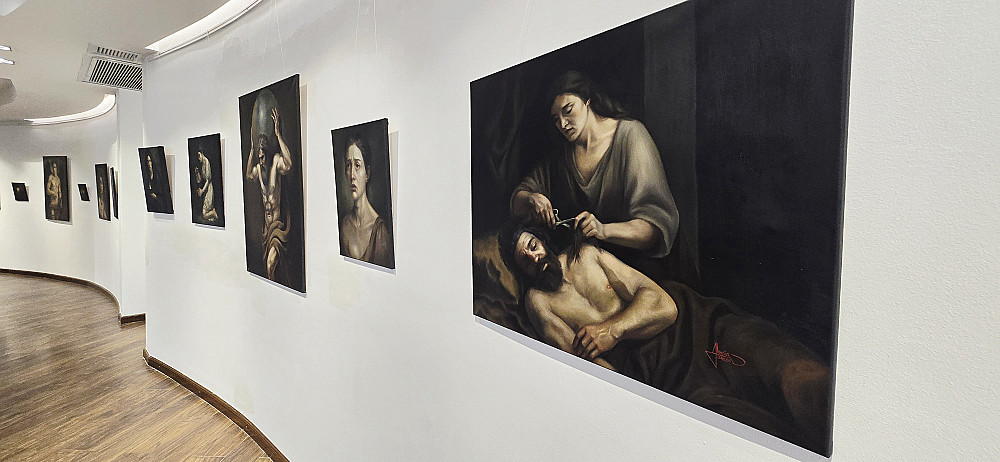
Published 12 November 2025 in Gallery Conversations
Alecia Loxton Interview Questions and Answers by Petra Peppler
1. What drew you to explore the “fragile, human moments” in mythological stories, and why do you think these moments are still so relevant to our lives today?
I’ve always been drawn to the silences in mythology like the moments before or after something monumental happens. The ‘calm before the storm’ moments. These are the places where the characters feel most human. It is here where you feel and see their fear, uncertainty, tenderness, or weariness. I think those moments last because they mirror emotions, we all know. While the stories are ancient, the feelings inside them remain with us.
2. In your artist statement, you describe capturing moments of decision and hesitation, like Medusa before turning to stone or Pandora just before opening her jar. Can you share how you decide on these specific moments, and why they resonate with you?
I look for the point in a story where everything could still change. That moment of hesitation or anxiety feels more powerful to me than whatever will follow because it is full of tension and possibility. In those moments, the character carries the entire weight of what is to come, and that burden is something deeply relatable. I paint these pauses because they are fragile, and yet they hold the whole story inside them.
3. You mention working slowly with oil paints to create a layered effect, echoing the chiaroscuro of the Old Masters. How does this technique help you express the emotional weight of the characters in your work?
Working in layers allows me to build depth gradually, letting me spend time with my work by putting something of myself in them. The most precious thing we have is time and that is what I want to give to every painting I create. The chiaroscuro is the most striking lighting technique to me as it gives each figure a sense of stillness and gravity, placing them in a space that feels both timeless and intimate. It’s a way of holding the viewer in that same pause as the subject, allowing the emotion to linger.
4. Your paintings allow viewers to meet the figures of myth “not as gods or monsters, but as us.” What do you hope people take away from encountering these figures, and how do you hope they connect with the emotions and choices represented in your work?
I hope viewers see something of themselves reflected back to them. Whether it’s Medusa’s fear, Medea’s deliberation, or Eros’ hesitation. I hope the painting are mirrors that not only reflect but confront emotions that are sometimes hard to deal with or emotions that allow you relive a beautiful memory. My wish is that the work creates a moment of recognition, a reminder that these stories endure because they carry truths about us. More than anything, I want the encounter to be quiet, almost intimate, as if meeting another human being across time.